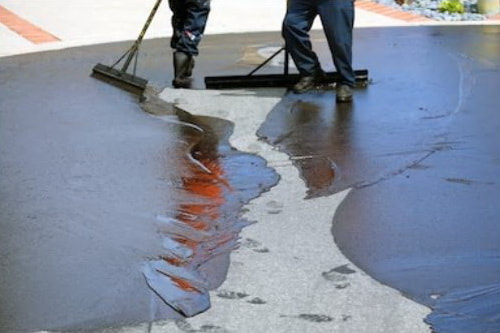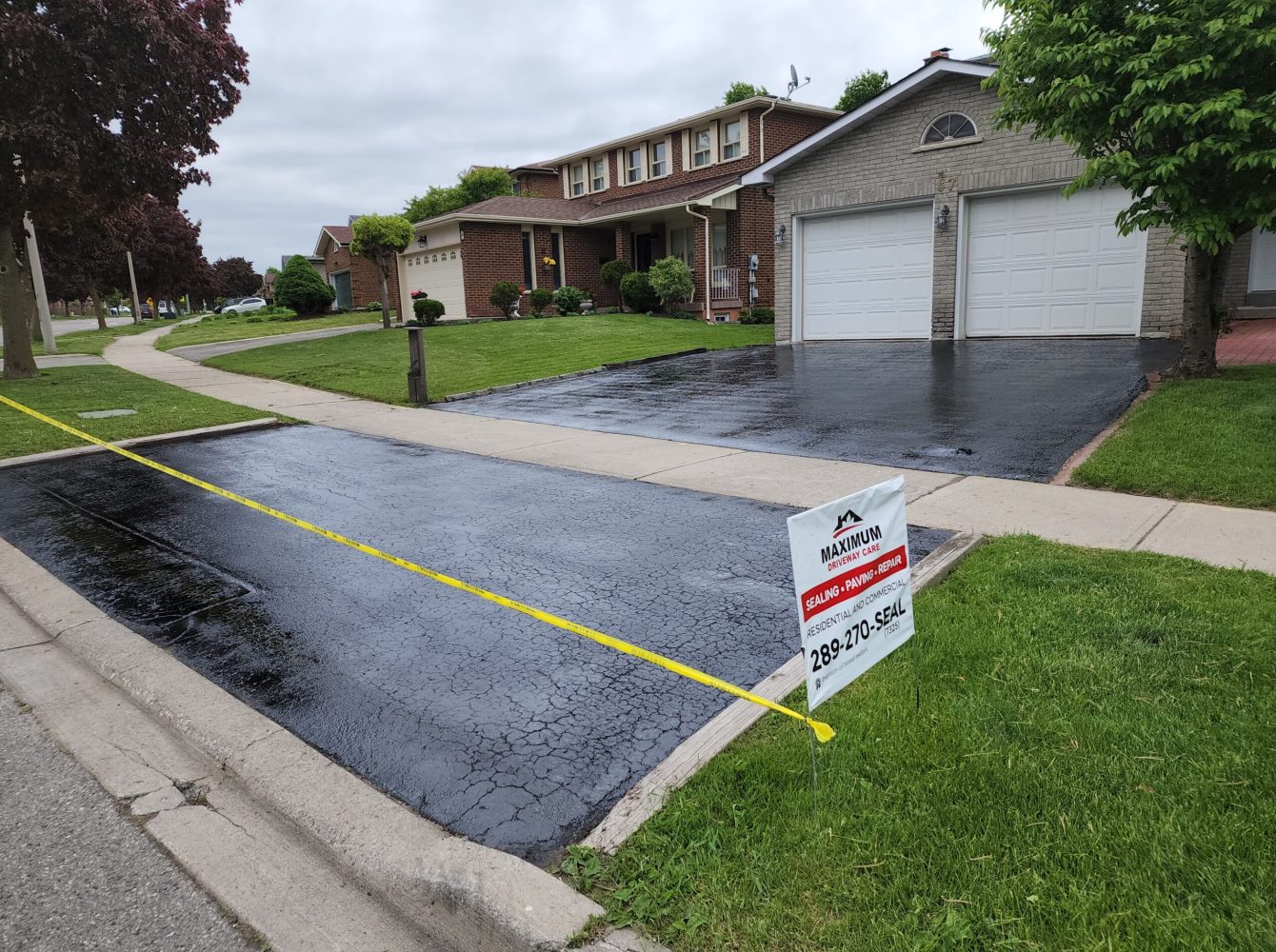Let loose the Possible: Regrading and Asphalt Sealing for Business Rooms
Wiki Article
Warm Mix Asphalt: A Lasting Solution for Pavement
Hot Mix Asphalt (HMA) has actually arised as a leading sustainable choice for pavement services, supplying a myriad of innovative technologies and environmental benefits. As the demand for eco-friendly construction techniques grows, discovering the subtleties of HMA's sustainability can supply beneficial insights into the future of pavement remedies.Ecological Benefits of Hot Mix Asphalt

Additionally, Hot Mix Asphalt aids to mitigate metropolitan warmth island effects. Its dark color absorbs sunlight, reducing the quantity of warmth mirrored back right into the ambience compared to lighter-colored sidewalks. This can reduce ambient temperature levels in metropolitan locations, lowering the demand for cooling and ultimately lowering energy consumption.
Furthermore, Warm Mix Asphalt adds to improved stormwater administration. Its permeable nature enables water to recharge and penetrate the pavement groundwater materials, reducing drainage and the threat of flooding. These ecological advantages make Warm Mix Asphalt a lasting option for paving roads and freeways.
Energy Performance in HMA Manufacturing
Is power effectiveness a critical element in the production of Warm Mix Asphalt (HMA)? Energy plays a considerable duty in the production of HMA, impacting both price and ecological sustainability. One vital element of power effectiveness in HMA manufacturing is the usage of warm mix asphalt (WMA) innovations.Additionally, advancements in plant modern technologies have actually led to more energy-efficient HMA production procedures. Modern plants are created with features like recycled asphalt sidewalk (RAP) handling capacities, effective burner systems, and boosted insulation, all adding to energy savings. By optimizing energy usage in HMA manufacturing, the market can lower its carbon footprint while preserving top quality sidewalk products. Power efficiency is, therefore, a vital factor to consider in making sure the sustainability of Warm Mix Asphalt production.
Recyclability of Warm Mix Asphalt
The recyclability of Warm Mix Asphalt (HMA) is a pivotal element of its sustainability and long-lasting environmental impact. HMA is one of the most recycled products in the USA, with over 100 million lots of reclaimed asphalt pavement (RAP) being reused yearly in brand-new sidewalk construction. Recycling HMA offers several ecological benefits, such as minimizing the demand for virgin products, reducing power consumption during production, and reducing the amount of waste sent to land fills.The procedure of reusing HMA involves grating the existing pavement, squashing it right into smaller sized pieces, and mixing it with new accumulation and asphalt binder to create a recycled mix. On the whole, the recyclability of HMA plays a substantial function in advertising lasting methods within the pavement sector.

Long-Term Performance of HMA
Asphalt pavements demonstrate resilience and durability over an extensive period, mirroring the long-term efficiency of Warm Mix Asphalt (HMA) The long life of HMA can be attributed to its ability to stand up to rush hour tons, rough climate condition, and the effects of have a peek here aging. Researches have shown that well-designed and properly created HMA pavements can last for two decades or even more with normal maintenance. The key to making best use of the long-lasting performance of HMA hinges on making use of high-grade products, complying with finest techniques in building, and carrying out reliable upkeep methods. Correct drainage, routine inspections, and prompt fixings are essential for protecting the architectural honesty of HMA pavements gradually. In addition, advancements in HMA innovation, such as making use of polymer-modified binders and cozy mix asphalt, have further enhanced the toughness and durability of HMA pavements. By focusing on top quality building and upkeep methods, HMA remains to prove itself as a lasting and economical option for long-lasting pavement infrastructure.
HMA: Sturdiness and Sustainability
Showing both durability and sustainability, Warm Mix Asphalt (HMA) has actually become a keystone in the building and construction of resilient pavement frameworks - regrading. HMA's resilience comes from its ability to withstand heavy tons, extreme weather, and high traffic quantities, making it a reliable choice for roads, highways, and flight terminal runways. The structure of HMA, which normally includes aggregates, binder, and filler, plays a critical role in boosting its long life and resistance to put on and tear
Furthermore, HMA's sustainability hinges on its recyclability and energy-efficient manufacturing procedure. The capability to recycle recovered asphalt pavement (RAP) in new HMA blends decreases the demand for virgin products and minimizes the ecological impact of pavement building and upkeep. Furthermore, the energy efficiency of generating HMA hinges on its reduced blending temperature levels contrasted to other sidewalk materials, resulting in lowered energy usage and greenhouse gas emissions.
Conclusion
In conclusion, warm mix asphalt (HMA) uses a sustainable solution for sidewalk with its ecologically friendly characteristics. HMA's recyclability, power effectiveness in manufacturing, and lasting longevity make it an environment-friendly choice for roadway construction.
HMA is one of the most recycled products in the United States, click over here with over 100 million loads of redeemed asphalt sidewalk (RAP) being reused yearly in new pavement construction.The process of reusing HMA content involves milling the existing sidewalk, crushing it right into smaller sized pieces, and blending it with brand-new aggregate and asphalt binder to produce a recycled mix.Asphalt sidewalks demonstrate longevity and durability over an extended period, mirroring the long-term efficiency of Warm Mix Asphalt (HMA) Furthermore, innovations in HMA modern technology, such as the use of polymer-modified binders and cozy mix asphalt, have actually further boosted the toughness and longevity of HMA sidewalks. The capacity to reuse redeemed asphalt pavement (RAP) in new HMA mixes minimizes the demand for virgin products and minimizes the ecological effect of pavement building and maintenance.
Report this wiki page